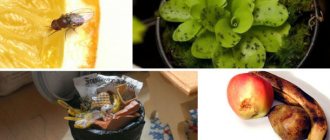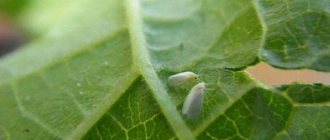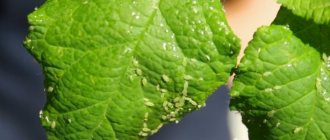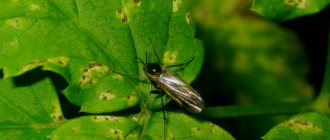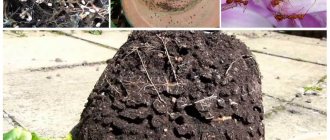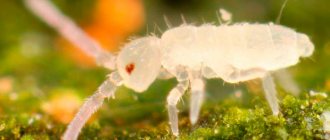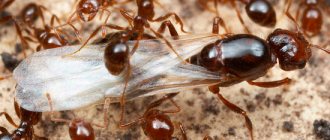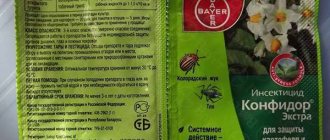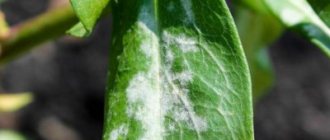Potassium permangantsovka
When midges appear, you must first let the soil dry, and then replace the irrigation water with a weak solution of potassium permanganate. You only need a few grains per liter of water so as not to burn the roots. The plant can also be sprayed with this composition.
Potassium permanganate has a good effect in the fight against fungus in the soil. If you smell mold, dry the soil and water it with a pale pink solution.
It is not recommended to use the product on an ongoing basis. This can disrupt the acid-base balance of the soil and lead to the accumulation of manganese in the soil. As a result, not only pathogenic microorganisms will die, but also beneficial bacteria.
How to wash berries
Before eating, strawberries need to be washed. You can even soak it in a weak solution of vinegar (a tablespoon per liter) for three to five minutes. This will help increase shelf life. If you are afraid of eating an insect, Sriyanka Lahiri recommends soaking the berry for 20-30 minutes in water. The liquid will force the worms to leave the fruit.
Sulfur from matches
Sulfur is part of complex fertilizers. In addition, fungicides based on this microelement are used for treatment at the first signs of a fungal disease.
To rid indoor flowers of pests, experienced flower growers stick matches into the ground with their heads down. After some time, the midges and their larvae will disappear, and the plant will receive almost free feeding.
The disadvantages of this method include the need to frequently change matches: the sulfur on them dissolves in one day. Wooden sticks left in the soil can rot and cause pathogenic flora to multiply.
Preventive actions
In order for worms to stop spreading on strawberries, first of all, you need to take care of high-quality planting material. When inspecting seedlings during purchase, pay attention to the roots. They should be without the slightest sign of damage, but even in this case, they must be treated with hot water before planting.
During the entire growing season, the soil requires composting. Compost contains fungi that destroy the nematode pest.
An important aspect is constant compliance with crop rotation. For strawberries, it is necessary to change the growing location every 5 years. This measure minimizes the spread of the nematode throughout the area.
It will not be very good to plant cabbage, peas, beans, carrots and potatoes next to strawberries.
When nematode treatment has been carried out, for the next season you can choose berry varieties that are more resistant to the parasite. These can be varieties:
- Saxon;
- Granddaughter;
- Rocket;
- Festival.
In the spring and autumn, it is necessary to carefully remove the remains of plants and unnecessary grass from the garden. All this is necessarily burned, and those pests that remained there, preparing to spend the winter, are destroyed.
When planting, it is necessary to avoid thickening of plants. They are periodically thinned and weeded. This reduces the number of nematodes significantly.
Centipedes often end up in strawberry plantations along with manure. Do not use fresh manure for fertilizer, but carefully check the humus. It is difficult to combat an emerging pest, so it is important to first take preventive measures.
- Disinfection of soil for seedlings of vegetable and flower crops (soil steaming).
- Mulching with straw or inorganic materials (Agrotex, cardboard).
- While the berries are ripening, add processed sawdust and sand to the soil to make it looser. Reduce watering. Using raised beds. More frequent loosening of heavy soils, replacing irrigation with loosening.
- Timely collection of fruits that have fallen from trees.
- Installation of baits. Slices of root vegetables, potatoes, carrots are laid out on the surface of the ground. Accumulated pests are destroyed.
- In extreme cases (if the pest population is high), chemicals can be used. For example, the drug Grom-2.
Lures
Early in spring, place rotten potatoes (or other vegetables, zucchini or pumpkin will do) in the rows. Check back in a day or two. Centipedes lay larvae on rotten cuts, because recycle organic matter. Just scrape the worm into salted water with a knife - this will reduce the population of centipedes in the area.
Poisoned baits (the same slices of root vegetables soaked in broad-spectrum insecticides) are effective.
You can catch mole crickets in the fall, like a mole cricket: dig holes 30 cm in diameter and up to 40 cm deep, put leaves and vegetable waste in them, sprinkle with a 5-10 cm layer of earth. Mark the holes. With the onset of frost, these baits can either be scattered in a thin layer on the ground (the pests will freeze out) or burned, which is more reliable.
Garlic
Strong antibacterial agent. Its smell cannot be tolerated by insects. If you are not afraid of a specific aroma, water your indoor flowers with garlic infusion.
Garlic destroys mold spores, prevents plant diseases and repels all insects. It is necessary to chop 7-10 cloves of garlic, pour a liter of boiling water over them and leave for at least a week.
Strain the resulting concentrate, measure out 50 g and stir in 10 liters of water. This solution can be used to both water and spray plants.
A simpler, but less effective way is to put a few cut cloves in a flower pot.
Advantages of using garlic: getting rid of pests, preventing plant diseases and saturating the soil with useful substances. The disadvantages include a pungent odor, the duration of preparation of the infusion and its short shelf life.
What happens if you eat kivsyak with strawberries
As stated earlier, almost all the larvae in the berry are harmless to humans. Depending on the individual characteristics of your body, you may vomit if you notice the larvae after finishing the berry. But this is rather an exception; it all ends with loss of appetite.
Ironically, people cannot see the dangerous inhabitants of fruits, vegetables, baked goods, meat and even water with the naked eye. First of all, we mean bacteria and mold. Some species are so toxic that they can kill a person within a few days.
Tobacco infusion
To prepare the product, tobacco dust, shag and dry tobacco leaves are suitable. Approximately 400 g of powder should be poured into 10 liters of water at room temperature and left for a day.
After a day, strain the mixture and spray it on indoor plants. Nicotine, which is part of tobacco, kills all insects.
To better retain the liquid on the leaves, you need to add a little laundry soap to the resulting composition.
Caution should be used: use a protective mask and store separately from food. Nicotine is a poison not only for insects, but also for humans.
It can cause dizziness, nausea, and heart rhythm disturbances. This substance is especially toxic to children and pets.
Cold
All insects love a warm and humid atmosphere, and cold has a depressing effect on them. Sometimes it is worth taking flower pots out onto the balcony, especially in early spring and late autumn.
The cold will not only destroy pests in the soil, but also harden the plants. First you need to find out which colors are indicated for such procedures. For example, geranium and fuchsia can easily tolerate temperature drops of up to 10 °C.
However, not all plants are so patient. Even a slight drop in temperature can cause the death of heat-loving tropical crops, in which case complex measures will have to be used to combat insects.
Who are nematodes
Nematodes, or roundworms, are a type of living organisms that include a huge number of species, many of them parasites of both animals and plants. As a result of their life activity in the garden and on the bed (both in open ground and in greenhouses), the germination capacity of plants is reduced, growth and development slows down, multiple deformations are formed, flowering and fruiting are greatly weakened, resistance to most diseases is reduced, many of the young plants they just don't survive.
- All garden pests in tables with descriptions, photos and control measures
We have compiled a “dossier” for you on each pest - save this collection!
These worms exist on the roots as ectoparasites or penetrate into the plant through the organs of the root system and already behave as endoparasites of leaves and stems.
In this regard, herbivorous nematodes are divided into three large groups:
- Stem nematodes are especially harmful to vegetable and flower crops. As they feed, they actively release toxins, clog the plant’s blood vessels and severely damage the stems, leaves, buds and flowers. You can notice them by cracking and deformation of the stem, spindle-shaped thickenings, corrugation and dark spotting of leaves, loosening of the tissues of succulent scales in bulbous plants. Their favorite objects are hyacinths, begonias, daffodils, carnations, phlox, tulips, onions, garlic, tomatoes, cucumbers, parsley.
- Leaf nematodes are fast-moving endoparasites. Their activity is recognized by the appearance of pale yellow spots, thinning, browning and further drying and dying of leaves. They live on a variety of ornamental plants; they love strawberries, chrysanthemums, and nephrolepis.
- Root (knot-knot) nematodes are so named because they parasitize the root system of plants, forming growths (galls) of various sizes and shapes on it, which interfere with normal nutrition and water absorption, as a result of which the plants wither and die. Greenhouse tomatoes, eggplants, and cucumbers especially suffer from them - you can lose 30-80% of your harvest! These parasites also feel great in open ground, affecting beets, potatoes, and oats. Ornamental crops are also in danger - lilies, ficus, asparagus, begonias, cyclamens...
A significant danger of nematodes also lies in the fact that they are carriers of phytopathogenic organisms, facilitating their penetration into plant tissue through the resulting damage and further viral diseases.
Nematodes on plants feed extremely actively and reproduce, creating entire colonies. And the peculiarities of their biological development (several intermediate forms with very different characteristics) lead to the fact that conventional pesticides do not have any toxic effect on them.
The most common representatives in our summer cottages are such representatives as golden potato nematode, beet nematode, stem onion nematode, strawberry nematode, chrysanthemum leaf nematode and others.
How to fight them, what helps against nematodes?
Lemon or lime zest
A cheap way to kill harmful insects is to use citrus peels. They will not only repel pests with volatile phytoncides, but will also become a vitamin supplement for the root system.
You need to break the lemon or lime peels into pieces and put them in a flower pot. This procedure should be carried out several days before the next watering, so that natural waste does not mold on wet soil.
The disadvantages of the method include the short duration of its action: when dried, citrus peel quickly loses its effectiveness.
Mosquito fumigator
The compositions that are filled with purchased fumigators are an excellent means of combating flower midges. They do not kill the larvae in the flower pot, but only repel insects for several hours or days.
In addition, they are used up quite quickly. Therefore, the method, despite its ease of use, is not the most effective.
The room must be ventilated from time to time to avoid dizziness, headaches and allergic reactions, which can be caused by low-quality products at a low price.
Cultivation of nematode-resistant varieties
Over the course of many years of growing potatoes, domestic gardeners have noticed that not all varieties of this crop are equally affected by the nematode. Among potato varieties, there are some that show some resistance to these roundworms. Here is their list:
- Krinitsa;
- Sante;
- Atlant;
- Red Scarlet;
- Stonefly;
- Rosara;
- Breeze;
- Uladar;
- Lily;
- Veras;
- Lapis lazuli;
- Yanka;
- Rodrigue;
- Crane.
Although they say that the occurrence of a nematode on a site can be compared to a natural disaster, one should not give up. If you don’t fight it at all, you may end up without a harvest at all. Therefore, it is necessary to correctly carry out all agrotechnical measures, and if symptoms are present, spray the bushes with nematicides.
Insecticide
The most effective way to combat any harmful insects is the use of professional insecticides. Good results in pest control can be achieved with drugs containing imidacloprid or thiamethoxam. These substances are synthetic analogs of nicotine.
Based on them, many pest control products have been created. When sprayed, the drug penetrates the above-ground parts of the plant and remains there for a long time.
The substance itself does not harm plants, but kills insects that land on them. Worms and larvae living in the soil also die.
Like the use of any chemical pesticides, the use of such products can negatively affect the health of people and animals. Bio Spark is considered the safest drug containing a small dose of imidacloprid. When working with it, you must wear gloves and a respirator, and then thoroughly ventilate the room.
White worms in strawberries - harmful to humans
In fact, the larvae of the vast majority of insect pests are harmless to human health. They spoil your appetite if you notice them. Single larvae do not affect the taste of the product, and accidental ingestion does not even lead to diarrhea.
Shriyanka Lahiri, an entomologist and assistant professor at the University of Florida, says a person shouldn't call an ambulance if they realize they've eaten several wormy berries. According to her, people have been eating strawberries with larvae for centuries and no disasters have happened because of this.
“There are no known side effects from eating these insects, ” says the expert.
When choosing strawberries, Rospotrebnadzor recommends paying attention to the color of the fruit. If there are stains, you should refrain from purchasing. It’s also a good idea to smell strawberries—the healthy food has a rich berry aroma.
